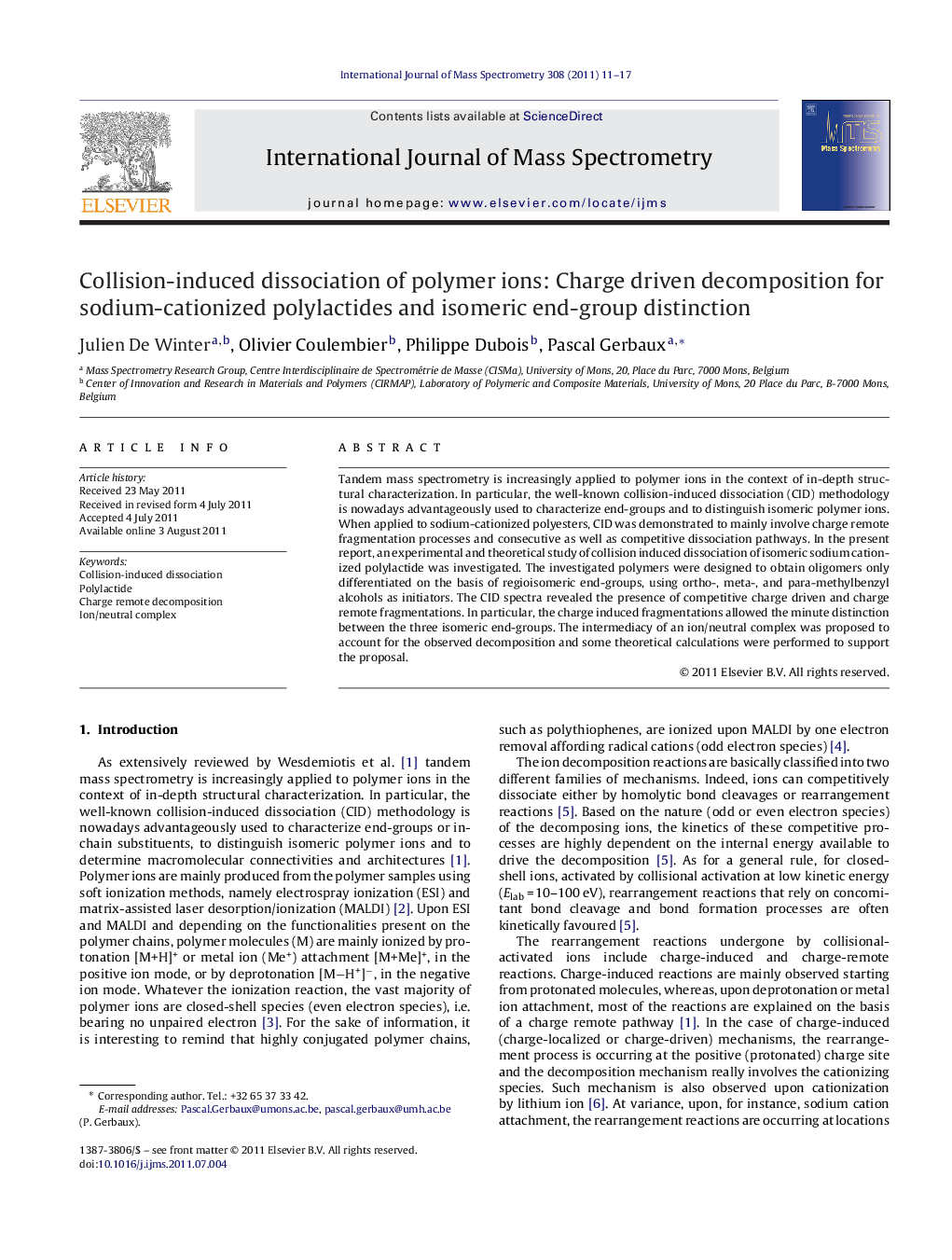| Article ID | Journal | Published Year | Pages | File Type |
|---|---|---|---|---|
| 1194356 | International Journal of Mass Spectrometry | 2011 | 7 Pages |
Tandem mass spectrometry is increasingly applied to polymer ions in the context of in-depth structural characterization. In particular, the well-known collision-induced dissociation (CID) methodology is nowadays advantageously used to characterize end-groups and to distinguish isomeric polymer ions. When applied to sodium-cationized polyesters, CID was demonstrated to mainly involve charge remote fragmentation processes and consecutive as well as competitive dissociation pathways. In the present report, an experimental and theoretical study of collision induced dissociation of isomeric sodium cationized polylactide was investigated. The investigated polymers were designed to obtain oligomers only differentiated on the basis of regioisomeric end-groups, using ortho-, meta-, and para-methylbenzyl alcohols as initiators. The CID spectra revealed the presence of competitive charge driven and charge remote fragmentations. In particular, the charge induced fragmentations allowed the minute distinction between the three isomeric end-groups. The intermediacy of an ion/neutral complex was proposed to account for the observed decomposition and some theoretical calculations were performed to support the proposal.
Graphical abstractFigure optionsDownload full-size imageDownload high-quality image (70 K)Download as PowerPoint slideHighlights► An investigation of the CID behaviors of sodium-cationized polylactides is reported. ► Isomeric polymer ions with regioisomeric end-groups were submitted to dissociation. ► Competitive charge remote and charge driven dissociation processes were observed. ► The isomeric end-group distinction is based on the charge induced reactions.
